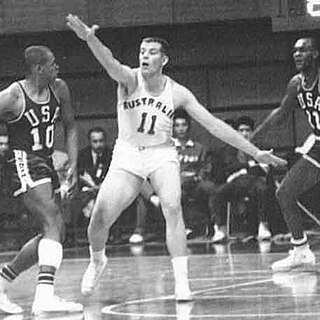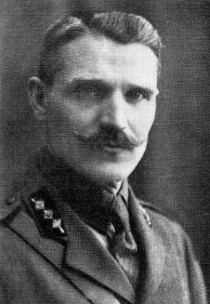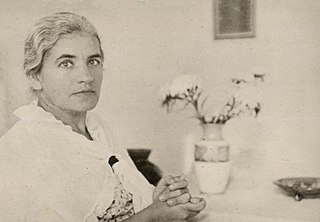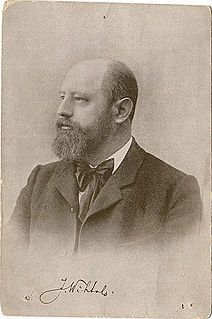 W
WAndrejs Auzāns (1871–1953) was a Latvian general and topographer.
 W
WGunnar Birkerts was a Latvian American architect who, for most of his career, was based in the metropolitan area of Detroit, Michigan.
 W
WĀdolfs Bļodnieks held the office of Prime Minister of Latvia from 24 March 1933 – 16 March 1934, for the New Farmers' Party.
 W
WJānis Daliņš was a Latvian race walker. Competing in the 50 km event he won a silver medal at the 1932 Olympics, becoming the first Latvian to win an Olympic medal. He also won the 1934 European title and set seven world records in the 1930s. At the 1936 Olympics he led the race at 30 km, but abandoned the race due to a leg injury.
 W
WMiķelis Reinis Dancis was a Latvian-born Australian basketball player. His brother, George Dancis, was also a basketball player. He represented Australia at the 1964 Summer Olympics. Both Dancis brothers were awarded the Australian Sports Medal on 13 September 2000.
 W
WOskars Dankers was a Latvian general. He participated in World War I and in the Latvian War of Independence. He was a recipient of the Order of Lāčplēsis, 2nd and 3rd class. During the occupation of Latvia by Nazi Germany, Dankers was appointed head of the German-controlled Latvian Self-Government.
 W
WAnšlavs Eglītis was a Latvian writer, journalist and painter who became a war refugee in 1944. He had prolific career as a novelist, and his later work often examined aspects of exile life.
 W
WLaila Ligita Freivalds is a Swedish Social Democratic politician who served as Minister for Justice from 1988 to 1991 and again from 1994 to 2000, as Minister for Foreign Affairs from 2003 to 2006 and as Deputy Prime Minister of Sweden briefly in 2004.
 W
WJuris Hartmanis is a prominent computer scientist and computational theorist who, with Richard E. Stearns, received the 1993 ACM Turing Award "in recognition of their seminal paper which established the foundations for the field of computational complexity theory".
 W
WKārlis Irbītis was a Latvian aeroplane designer.
 W
WAstrid Ivask was a Latvian-American poet.
 W
WMiervaldis (Walter) Jurševskis was a Latvian-Canadian chess master, and a professional artist.
 W
WJānis Kalmīte was a Latvian expressionist painter and among the best-known artists in the Latvian post-World War II diaspora community. His name is associated with the development of a singular theme – the rija. Rijas, or threshing barns, were historically among the oldest structures on the traditional Latvian homestead. Throughout his half-century of exile from Latvia, Kalmīte transformed the rija into an artistic symbol for the persistence of Latvian ethnic culture in the face of invasion and occupation by foreign powers.
 W
WBrūno Haralds Kalniņš was a Latvian social democratic politician and historian. He was the son of prominent social-democratic politicians Pauls Kalniņš and Klāra Kalniņa.
 W
WEduards Kalniņš was a Latvian general. He participated in the Russo-Japanese War and in the Latvian War of Independence. He was Minister of Defence of Latvia in 1926 and 1928 and was recipient of the Latvian military Order of Lāčplēsis, 2nd and 3rd class, and the Estonian Cross of Liberty.
 W
WPauls Kalniņš was a Latvian physician and politician (LSDSP), a long-term Speaker of the Saeima, one of the signatories of the Memorandum of the Central Council of Latvia in 17 March 1944, and was the Acting President of Latvia.
 W
WTālivaldis Ķeniņš was a Canadian composer. He was forced to emigrate from Latvia when it fell under Soviet occupation after World War II, moving to Canada around 1951. He is credited by Canadian musicologist Paul Rapoport by having introduced many European idioms to Canadian art music. CBC Music described him as a "pioneering Canadian composer" and The Canadian Encyclopedia described him as "one of Canada's most frequently commissioned composers."
 W
WIlsa Konrads is an Australian former freestyle swimmer of the 1950s and 1960s, who won a silver medal in the 4×100-metre freestyle relay at the 1960 Summer Olympics. In her career, she set 13 individual world records, and after her swimming career ended, was the Australasian editor of Belle magazine. Along with her brother John Konrads, who also set multiple world records, and won gold in the 1500-metre freestyle, they were known as the Konrad Kids.
 W
WJohn Konrads was an Australian freestyle swimmer of the 1950s and 1960s, who won the 1500 m freestyle at the 1960 Summer Olympics in Rome. In his career, he set 26 individual world records, and after his swimming career ended, was the Australasian director of L'Oréal, as well as campaigning for the Sydney Olympics bid. Along with his sister Ilsa, who also set multiple world records, they were known as the Konrad Kids.
 W
WMārtiņš Krūmiņš was a Latvian-American Impressionist painter. He left Latvia after World War II and came to the United States in 1950. "Mārtiņš Krūmiņš ... belongs to those artists of his generation, who amidst the changing trends of contemporary art, after thirty years in exile and emigration, as still basically close to and developing the traditions of their homeland art – of the 'Latvian or Riga School'".
 W
WEižens Laube was a Latvian architect. He was responsible for some of the reconstruction work of Riga Castle in the 1930s and designed more than 200 houses in Riga.
 W
WJānis Lidmanis was a Latvian footballer and basketballer. In the 1930s he was the captain of Latvia national football team for which he made 55 appearances and scored 2 goals.
 W
WCynthia Lynn was a Latvian-American actress.
 W
WZenta Mauriņa was a Latvian writer, essayist and researcher in philology. She was married to the Electronic Voice Phenomena researcher Konstantin Raudive.
 W
WJānis Mediņš was a Latvian composer. He was born in Riga. He was a vital force in musical life during the short-lived first independent Latvian republic (1918—40). He almost singlehandly established in his country both the balletic genre – with Mīlas uzvara – and the operatic with Uguns un nakts and Dievi un cilvēki. It was as a result of multiple invasions of his country that Mediņš left Latvia in 1944, eventually settling for good in Sweden.
 W
WEdmar John Mednis was a Latvian-American chess player and writer of Latvian origin. He was awarded the title of Grandmaster by FIDE in 1980.
 W
WJuris George Mikelsons is a former airline executive and airline pilot in the United States and the founder of ATA Airlines. He was born in Riga, Latvia, in 1938 on the eve of World War II. His family fled to Germany during the mid-1940s to escape the Soviet occupation of the Baltic states.
 W
WVaira Paegle was a Latvian politician. She was a Deputy of the Saeima and a member of the People's Party, later of the Civic Union.
 W
WLucia Peka was a Latvian-American artist. Born in Latvia, she became part of the diaspora of artists who fled Latvia during World War II, and eventually settled in the United States where she was a successful painter of landscapes, figures, and still life for almost 50 years. A touring gallery collection travelled within the US Midwest and Washington, D.C.(2010–2011) exhibiting a collection of Peka oil paintings along with other Latvian Displaced Persons of the mid 20th century.
 W
WVilhelms Purvītis was a landscape painter and educator who founded the Latvian Academy of Art and was its rector from 1919 to 1934.
 W
WWolf Ruvinskis, born Wolf Ruvinskis Manevics, was a naturalized Mexican actor and Luchador, or professional wrestler. He was married to dancer Armida Herrera. Born to a Latvian mother and a Ukrainian father, of Jewish background, they relocated to Argentina in 1923. In spite of living in extreme poverty he excelled in sports and as a professional wrestler he toured South America, the United States and Mexico. This last country became his place of residence where he stayed in the ring well into the 1960s, wrestling El Santo, Black Shadow, El Médico Asesino and Lobo Negro. As a wrestler he was introduced to the Cinema of Mexico playing luchadores, in particular a masked character he created called Neutrón. He also belongs to the Golden Age of Mexican cinema.
 W
WKārlis Skalbe was a Latvian writer, poet, and activist. He is best known for his 72 fairy tales which are really written for adults. He has been called the 'King of Fairytales', and his words, Tēvzemei un Brīvībai, are inscribed on the Monument of Freedom in Riga.
 W
WRaimonds Staprans is a well-known artist and playwright both in the United States and his native Latvia. Staprans was born in 1926 in Riga, Latvia. He now lives in San Francisco, California with his wife, scientist Ilona Staprāns. He has two daughters, Maretta Staprāns-Barlow and Alda Staprāns-Mednis.
 W
WEdwin Vedejs was a Latvian-American professor of chemistry. In 1967, he joined the organic chemistry faculty at University of Wisconsin. He rose through the ranks during his 32 years at Wisconsin being named Helfaer Professor (1991–1996) and Robert M. Bock Professor (1997–1998). In 1999, he moved to the University of Michigan and served as the Moses Gomberg Collegiate Professor of Chemistry for the final 13 years of his tenure. He was elected a fellow of the American Chemical Society in 2011. After his retirement in 2011, the University of Michigan established the Edwin Vedejs Collegiate Professor of Chemistry Chair. Vedejs died on December 2, 2017, in Madison, Wisconsin.
 W
WVaira Vīķe-Freiberga is a Latvian politician who served as the sixth President of Latvia from 1999 to 2007. She is the first woman to hold the post. She was elected President of Latvia in 1999 and re-elected for the second term in 2003.
 W
WVerners Vitands was Latvian architect. Vitands designed the Unity House in Daugavpils in 1936-1937. He was responsible for a number of important public buildings of 20th-century modernist design, better known as functionalism in Latvia, constructed in Latvia in the first half of the 20th century.
 W
WJāzeps Vītols was a Latvian composer, pedagogue and music critic. He is considered one of the fathers of Latvian classical music.
 W
WVoldemārs Zāmuēls held the office as Prime Minister of Latvia from 27 January 1924 to 18 December, 1924.